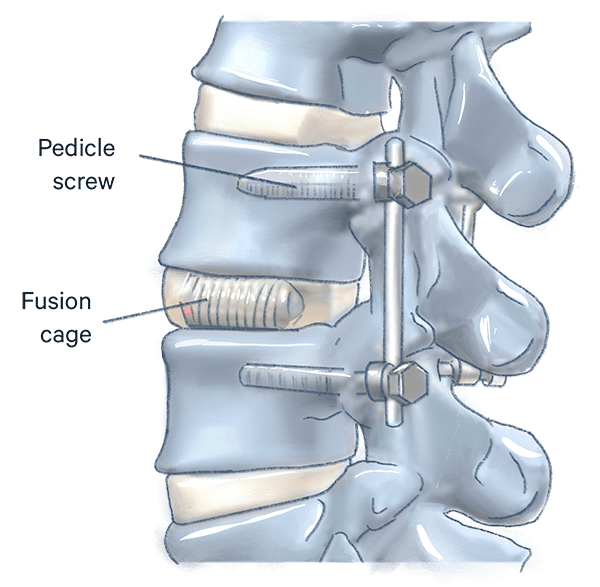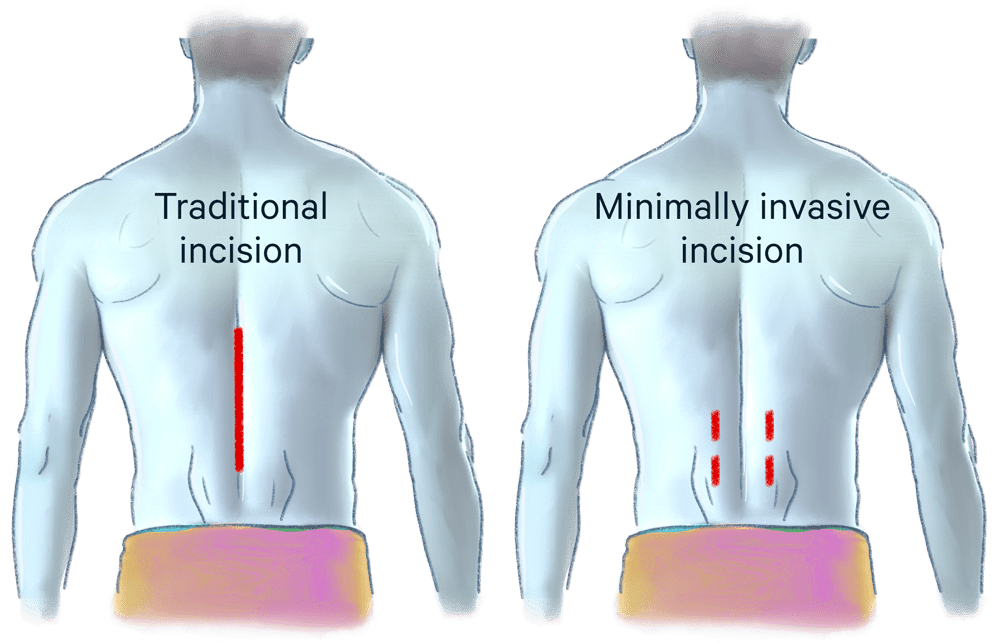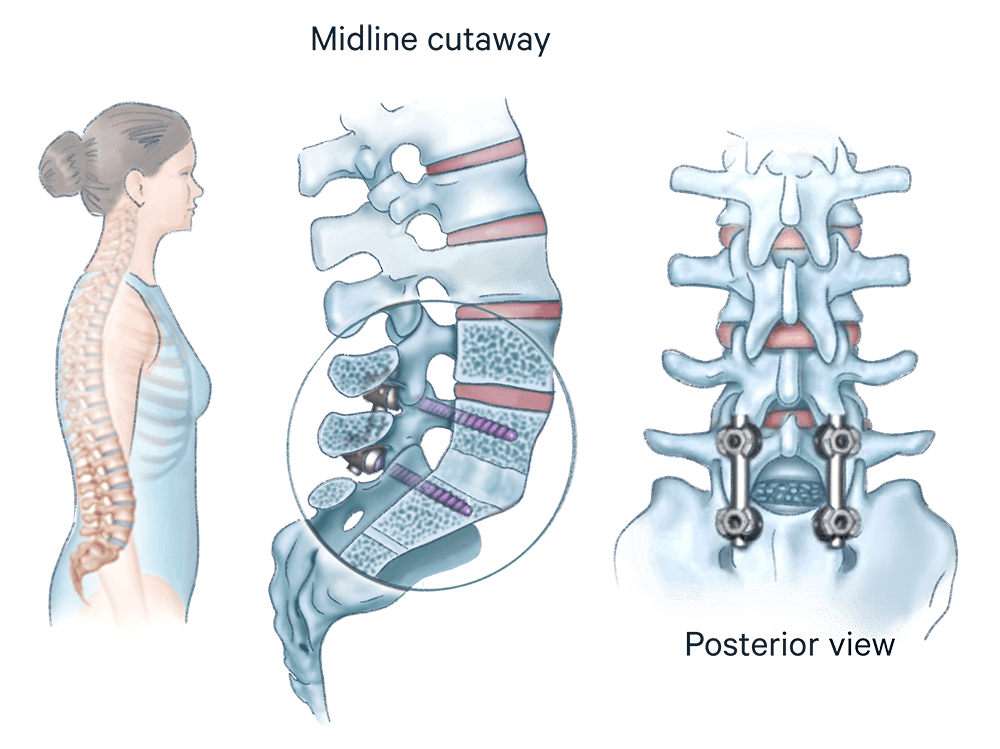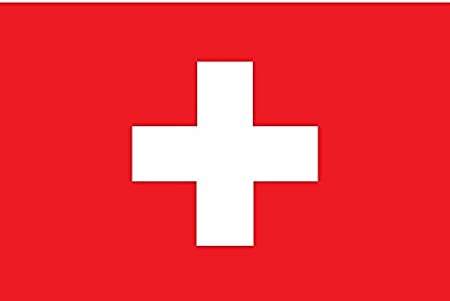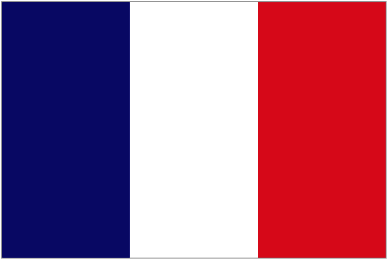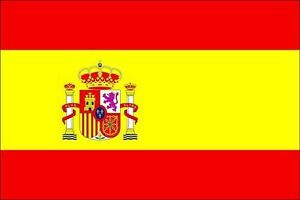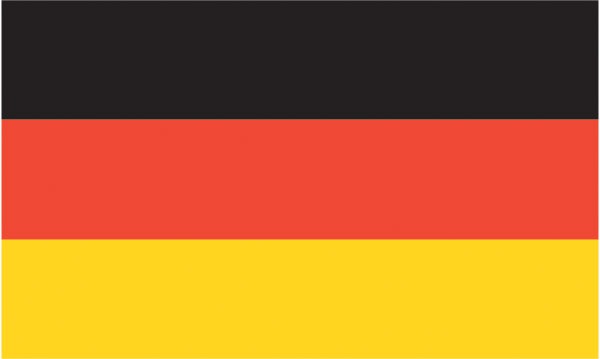Low back pain is common around the world and can have a major impact on your quality of life.
This website section is designed to inform you about the Neo Pedicle Screw System™ and the Neo Cage System™.
It is not meant to replace any personal conversations that you might wish to have with your physician or other member of your healthcare team.
The information is intended to answer some of your questions and serve as a stimulus for you to ask appropriate questions about the procedure. Not all the information here will apply to your individual treatment or its outcome.
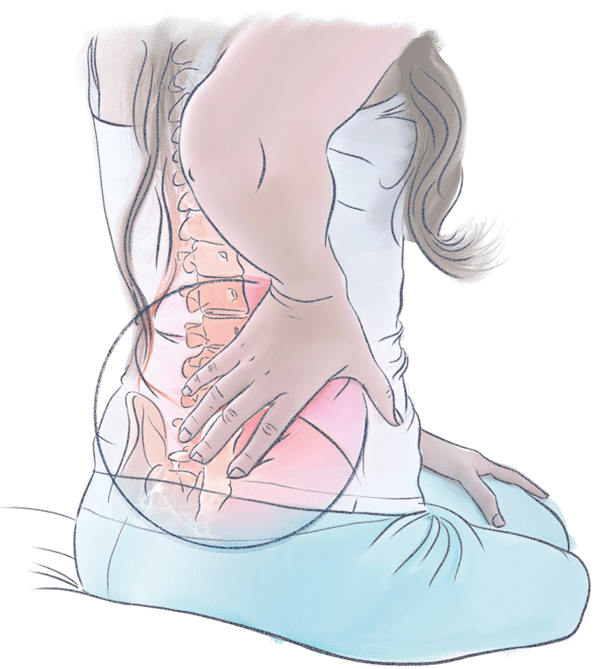
Background
About the Spine
The human spine plays an extremely important role in our bodies as it supports the upper body’s weight; provides posture while allowing for movement and flexibility; and protects the spinal cord.
It is made up of 24 bones or vertebrae and are divided into different regions. These regions are called the cervical spine, thoracic spine, lumbar spine, sacrum and coccyx.
The vertebrae are connected to each other through intervertebral discs. Each disc forms a joint to allow movement of the spine. The disc is made of two parts, a tough and fibrous outer layer (annulus fibrosis) and a soft, gelatinous center (nucleus pulposus). These two parts work together to allow the spine to move, and function as a shock absorber for the spine. Above and below each vertebra are joints called facet joints.
The vertebrae of the spine align so that their vertebral canals form a hollow, bony tube to protect the spinal cord from external damage and infection. Between the vertebrae are small spaces known as intervertebral canals that allow spinal nerves to exit the spinal cord and connect to the various regions of the body.
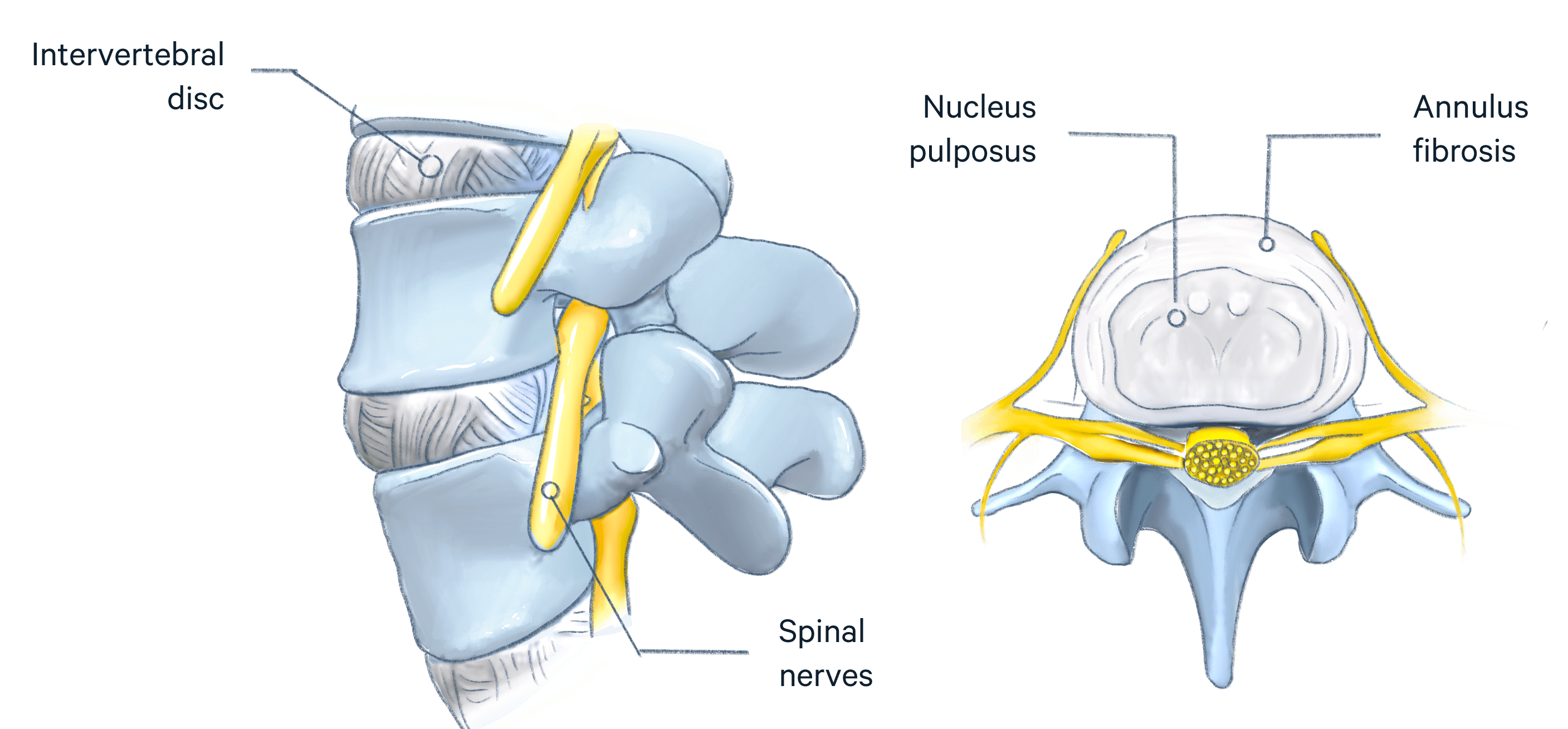
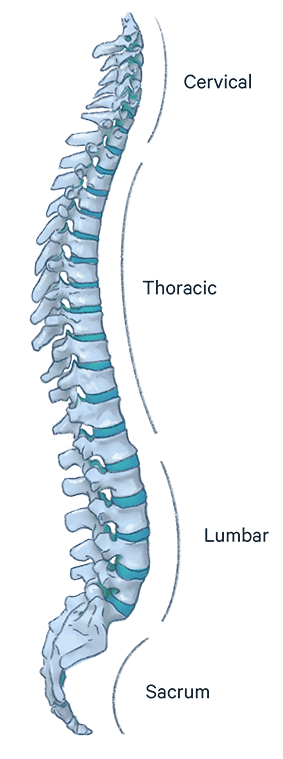
Your diseases
What Can Cause Pain?
Low back pain is a common disorder, around 80% of all people will suffer low back pain sometime in their lives, involving the muscles, nerves and bones of the back. Bone and joint conditions that lead to low back pain include those existing from birth (congenital), those that result from wear and tear (degenerative), or injury (trauma). Symptoms are mainly caused by instability of the spine, or by disc, bone or ligaments pressing onto the nerve roots or the spinal cord.
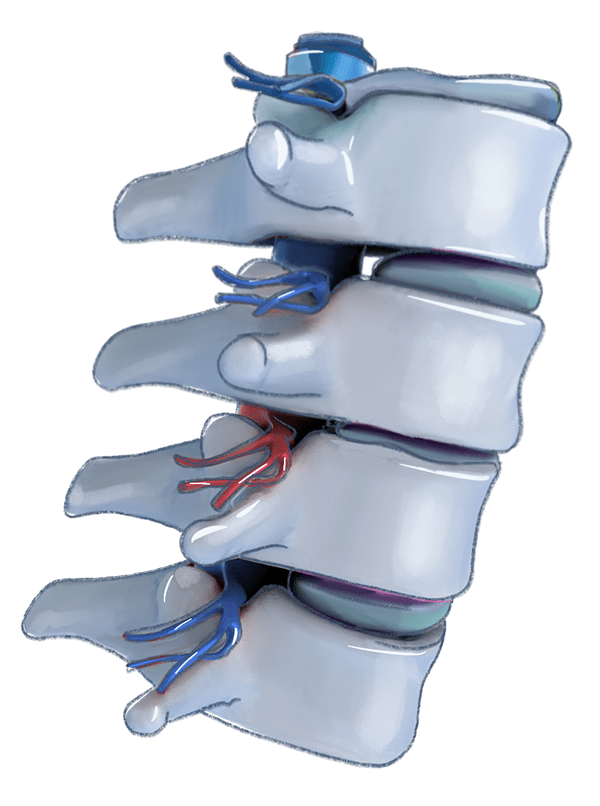
Degenerative Disc Disease (DDD)
As we age, the water and protein content of the body’s cartilage changes. This change results in weaker, thinner, and more fragile cartilage. Because both the discs and the joints that connecting the vertebrae (facet joints) are partly composed of cartilage, these areas are subject to degenerative changes. These changes causing the disc to herniate, bulge, or leak. The bulges or leakages can end up compressing the nerve roots and spinal cord, causing symptoms including, but not limited to lower back and/or leg pain.
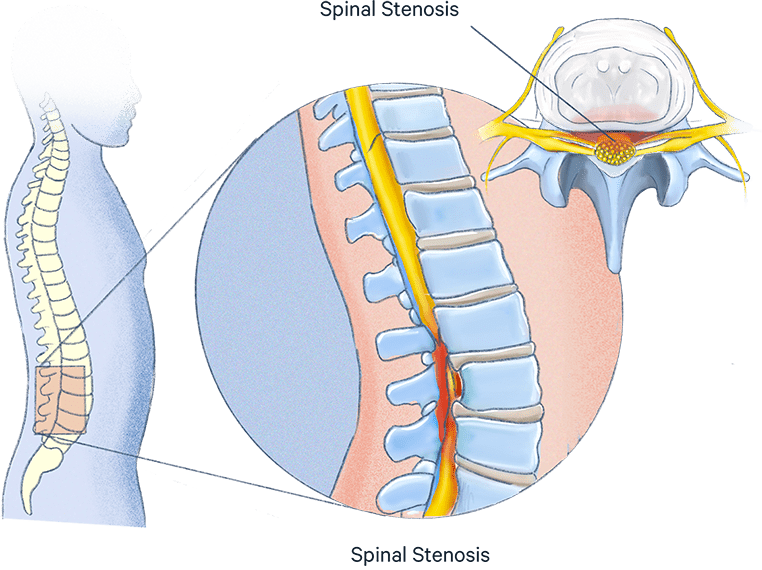
Spinal Stenosis
Spinal stenosis is a narrowing of the spaces within the spine, that can put pressure on the nerves that pass through the spine. Spinal stenosis occurs most often in the lower back and the neck. Depending on the location and how much narrowing occurs over time, a spinal nerve or the spinal cord could become compressed and cause pain, tingling, numbness, and/or weakness.
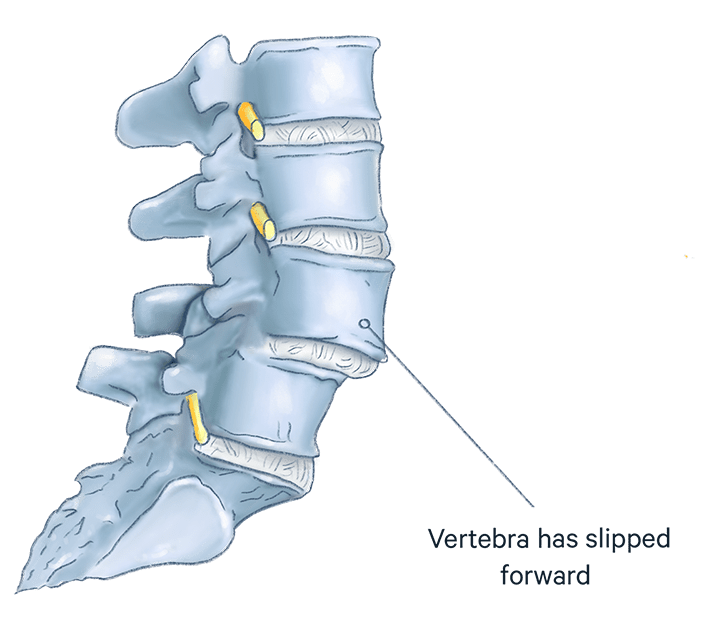
Spondylolisthesis
Spondylolisthesis is Latin for “slipped vertebral body,” and it is diagnosed when one vertebra slips forward over the one below it. This condition occurs as a consequence of the general aging process in which the bones, joints, and ligaments in the spine become weak and less able to hold the spinal column in alignment, but may also be caused by stress fractures, or congenital abnormalities, and in rare cases from a tumor or trauma.

Degenerative Scoliosis
Degenerative scoliosis, describes a side-to-side curvature of the spine caused by degeneration of the facet joints and intervertebral discs which are the moving parts of the spine. This adult degeneration and resulting spinal asymmetry can occur slowly over time as a person ages, and may cause symptoms including lower back and/or leg pain.
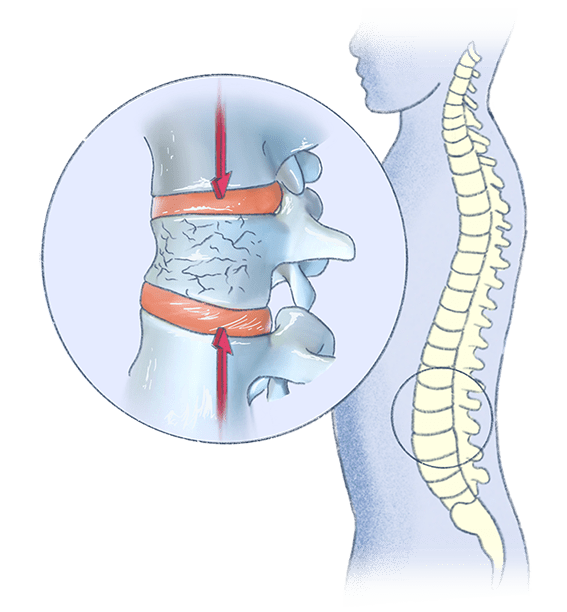
Traumatic Injury to the Bones and Joints
Fractures of the thoraco-lumbar spine and sacrum bone most commonly affect elderly people with osteoporosis. For these individuals, occasionally even minimal stresses on the spine can lead to bone fracture. Vertebral fractures in younger patients occur mainly after severe trauma, such as from motor-vehicle accidents or falls.
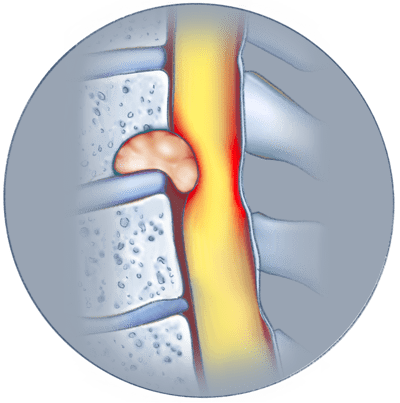
Tumors
Low back pain can also be caused by tumors that originate in the bone of the spine and spinal cord, and those that originate elsewhere, and spread to these areas (metastases).
Solutions
What are my Treatment Options?
With your physician you will be able to discuss treatment options appropriate for your individual situation. Back pain can often be treated with a combination of conservative treatments, such as manual therapy, exercise, medication and lifestyle changes.
If symptoms do not improve with conservative treatment, or if symptoms are increasing or worsening, physicians may recommend spinal surgery.
A surgical technique known as Spinal Fusion is used to treat these disorders. Metal screws, rods and cages are used to fuse together two or more adjacent vertebrae. The aim is to stabilize the spine and stop the motion of spinal vertebral segments, and to relieve pain by eliminating pressure on the spinal cord or on the nerve roots.
Your physician will determine if a Neo procedure is a good option if you require a spinal fusion at any thoraco-lumbar level.
